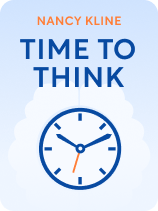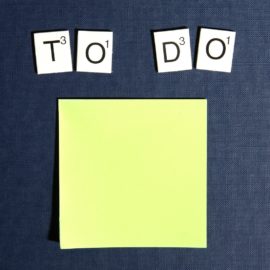

This article is an excerpt from the Shortform book guide to "Time to Think" by Nancy Kline. Shortform has the world's best summaries and analyses of books you should be reading.
Like this article? Sign up for a free trial here.
What if you could identify incorrect assumptions you have? Would you like to learn how to do this for yourself and others and experience breakthroughs as a result?
The key to evoking high-quality thinking in others is to listen to them well. Nancy Kline provides a step-by-step process for conducting a productive conversation, or a thinking session, which maximizes the quality of both listening and thinking. Part of this process is to identify assumptions that cause limited thinking.
Read more to learn how to overcome limited thinking by pinpointing faulty assumptions that stand in the way.
Identify Assumptions That Limit Thinking
An important step in the thinking session process is to identify the roadblocks that are currently preventing the thinker from achieving their goal. Kline explains that these roadblocks take the form of limiting assumptions, or beliefs that the thinker holds that curtail their ability to identify or implement the best course of action. There are three types of assumptions that result in limited thinking:
- Facts. These are statements of reality. For example, if the thinker is a college student who wishes their class had more hands-on activities, one of their assumptions about why they can’t change that might be, “I am not the professor.” That’s an objective, true statement.
- Conjectures. These are assumptions of things that might happen. For example, if the thinker is a stay-at-home parent who wants to rejoin the workforce but is worried about missing out on time with their family, their conjecture-based limiting assumption could be, “My family will resent me for not being around as much.”
- Core assumptions. These are fundamental beliefs that we’re often unaware of but that impact the way we think about the world. For example, if the thinker is having trouble talking to their partner about difficulties in their relationship, their bedrock assumption might be, “My needs are less important than keeping the peace in the relationship.”
| Limiting Assumptions, Cognitive Biases, and Untrue Facts Limiting assumptions can relate to or arise from cognitive biases. Like core assumptions, these are underlying beliefs we hold about the world that can distort our thinking. Biases provide shortcuts for our thinking so we don’t have to spend as much time or energy on making a decision, but because they’re often inaccurate, they can lead to highly flawed thinking in the form of assumptions and conjectures. Using the examples above, the stay-at-home parent’s conjecture that their family will resent them for not being around as much might arise from the availability heuristic bias, which is the tendency to over-rely on specific examples that quickly come to mind rather than considering all pertinent information or possible alternatives. Thus someone might rely on the specific, easily accessible example of another parent who went back to work and whose family resented them. Some people might have implicit bias that leads to stereotyping. An example of such a biased belief might be, “Women should stay at home to take care of the family.” The thinker who assumes that their needs are less important than keeping the peace in their relationship may be operating from the status quo bias, which leads them to think that any change in their current relationship dynamic will result in conflict. Additionally, while facts are ostensibly universal and undeniable, we’re often taught “facts” that aren’t actually true, and certain types of facts (particularly scientific facts) can ultimately be proven untrue even if they’ve been held as fact for decades or centuries. Also, as Darrell Huff explains in How to Lie With Statistics, facts can be manipulated or presented in a way that leads others to make inaccurate judgments. Thus, while you may be making an assumption that appears to be a fact, you should still examine it to make sure it’s truly reflective of reality. |
To identify the thinker’s main limiting assumption, ask them what they’re assuming that prevents them from achieving what they want to accomplish during the thinking session. Once they pin down their assumption, memorize it word for word.
Again, your job as the listener is not to identify the assumption for the thinker but to provide the setting for them to uncover it themselves, explains Kline. You may feel like you know what their limiting assumption is and that, therefore, you know what the solution to their problem is. However, if you misidentify their assumption, there’s a high likelihood that you’ll offer them a solution that clashes with their actual limiting assumption, making your solution seem useless and discouraging.
(Shortform note: Some people note that, when you try to identify the thinker’s assumptions and solutions for them, you’re making your own limiting assumption that you understand their perspective as well as or better than they do—which is impossible because you’re not them. Such an assumption will hamper your communication with the thinker and make them feel misunderstood and alone. Remember that they’re a unique person with different thoughts, beliefs, and experiences than you, and don’t try to impose your own thinking on theirs.)

———End of Preview———
Like what you just read? Read the rest of the world's best book summary and analysis of Nancy Kline's "Time to Think" at Shortform.
Here's what you'll find in our full Time to Think summary:
- That what and how we think determines everything we do
- Why the quality of your thinking depends on how well you listen to others
- A step-by-step process for taking on the role of the listener






